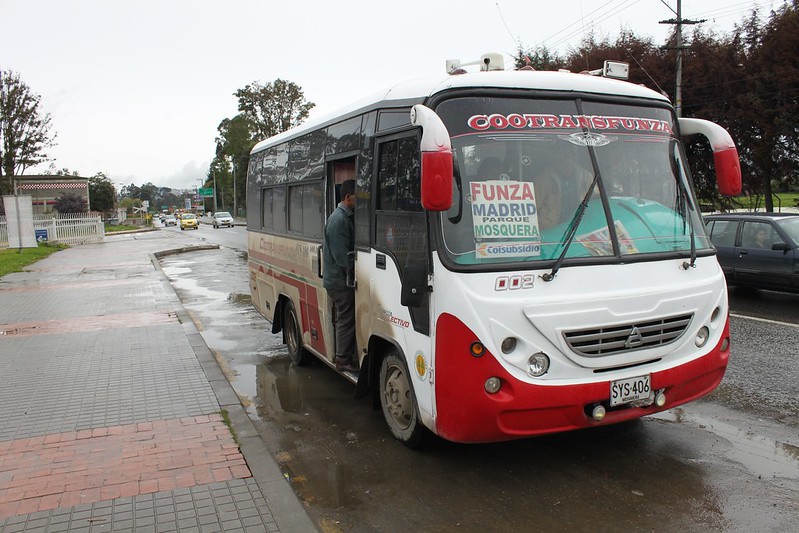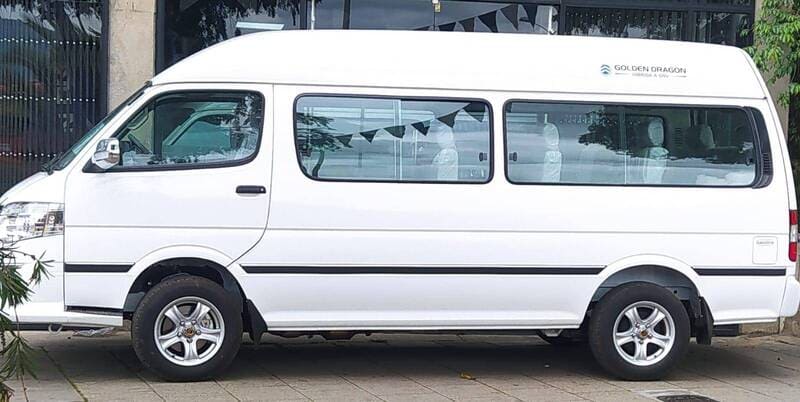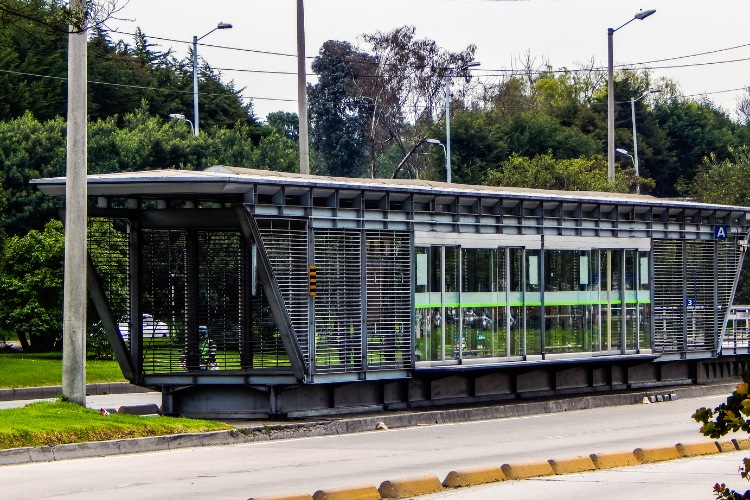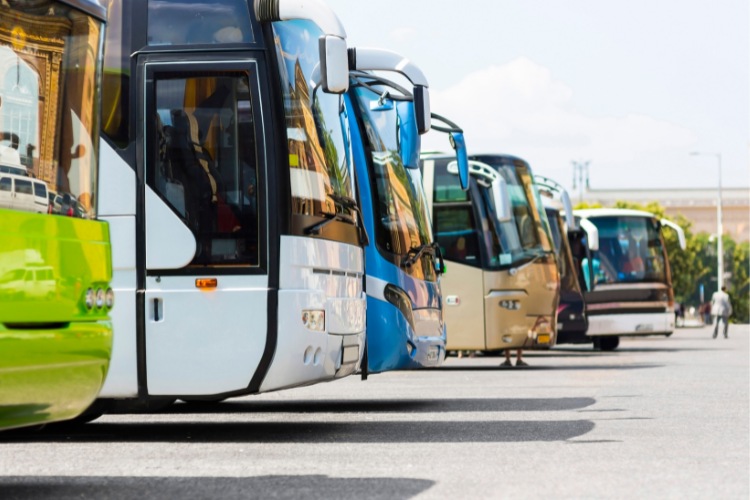Traveling around Colombia by bus is a great way to see some spectacular landscapes, save money, and visit towns inaccessible by air travel. Buses in the country can be exceptionally comfortable with large, reclining leather seats, entertainment systems, air conditioning, and Wi-Fi.
I have lived in Colombia for over 15 years and I have traveled to dozens of towns and cities by bus.
In this article, I will outline what bus travel is like, when it is your best option and how you can make sure you have a safe and stress-free journey as you explore the varied regions of this amazing country.
Colombia Bus Travel
Classes of Colombia Buses
1. Large Coaches
The larger, usually more modern buses are used almost exclusively for longer journeys of over 2 hours and up to 20 hours across the country. They have comfortable seats, there are almost never standing passengers permitted, usually toilets, reclining seats, footrests and air conditioning turned up to freezing levels (bring a hoodie or blanket).
Many of the buses now also have Wi-Fi, seatback televisions and fully reclinable seats in an effort to compete with the airline experience. Some buses have a small additional charge for these seats and it is almost always worth it.
For these buses, you can buy tickets online or at the bus terminals. Sometimes drivers will pick up informally on the way, although this isn’t allowed and is more carefully managed. On long journeys, the driver will stop at a roadside restaurant along the way. If it is a very long journey then there may be multiple stops.
2. Small Buses

Small buses known as “busetas” are all over Colombia’s major cities and can be found connecting towns and villages, usually on the shorter routes. They can be all sorts of shapes and sizes with a capacity of around 10 to 20 people, although this can be pushed to the limit with many standing.
In big cities, they will usually have larger buses serving the main roads while busetas head up and down the hills. They can be in a uniform design as part of the city’s formal network or they can be unique, colorfully painted and someone patched together by the private owners.
In the city, there will be a dedicated route with bus stops, although the bus will stop anywhere along the way. You can wave the bus as it is passing to get on and you can press the button (if there is one) or shout if you want to get off.
The drivers of these buses are remarkable multitaskers. They drive at top speed while checking for people waving to get on, they manage the doors, they collect the money, calculate and return the change all while talking to passengers. You can pay as you enter the bus, you can get on, sit down and then get up to pay or you can pay as you get off. There is a fair amount of trust involved, although the driver will be trying to keep track.
Cash only on busetas, unless it is an official city bus included in the transport network. For example, there are buses in and around Medellin where you can pay with your Civica travel card.
For buses traveling between towns, cities and villages you can buy tickets at the bus terminal and they will only sell the number of tickets in accordance with seats. Despite this, sometimes the driver will pick up extra passengers just after leaving the terminal or pick up and drop off along the route to the official destinations.
3. Mini-Vans and Collectivos

“Colectivo” is a term that in Colombia refers to any informal, shared transport.
This can be, for example, a taxi driver who takes multiple individual passengers to the same or nearby locations splitting the fare. It could also be a pickup truck where everyone puts in a dollar or so, it could be a Willys jeep or even a private car.
It can be a cheaper alternative to a private transfer with the cost shared or it can be an improvised solution in villages or more isolated neighborhoods which aren’t well served by buses.
Minivans can also fall within a similar category or be a pre-booked solution to meet a specific need. In rural areas, they can have vaguely defined routes or they can shuttle between important points of interest.
In all instances, you will usually pay the driver in cash when you leave or just before you arrive.
4. Chivas

An emblematic symbol of rural Colombia, Chivas are most identified now as party buses but in some parts of the country, they still fulfill their designed function as a means of transport.
These are colorfully painted buses which have rows of bench seating and the only window is often at the front for the driver. They traditionally have connected towns and villages around the country but now are also used as party buses with loud music, alcohol, flashing lights and dancing.
You will still find some Chivas outside of the major towns chugging up and down the country roads filled with passengers and goods.
Colombian Bus Companies
Expreso Bolivariano – A Luxury Bus Company in Colombia
Ver esta publicación en Instagram
Expreso Bolivariano was founded in 1956 and offers routes to around 75% of the country.
The company has one of the better websites and it is very easy to purchase tickets online directly. They offer normal coaches, double-decker buses (DuoBus) and smaller transit vans for shorter trips.
In my experience, the Bolivariano buses are the most modern, comfortable and well-maintained.
They have bathrooms, Wi-Fi, charging points and air conditioning on all of their long-distance buses. They also have first class areas downstairs on their DuoBus which has very large leather seats that almost fully recline, entertainment systems in the seat in front and lots of space.
First class on a DuoBus is in my opinion the most comfortable way to travel by road in Colombia.
Copetran – Colombia’s Oldest with a Good Range of Services
Ver esta publicación en Instagram
Copetran has been operating since 1942, originating in the Santander region before expanding into the interior of the country and then to the Caribbean coast, serving Cartagena, Barranquilla and Santa Marta.
They have 5 different tiers of buses including a double-decker and a luxury service. Their best buses have multiple bathrooms, air conditioning onboard Wi-Fi, movies and seatback screens.
Generally, Copetran is very good although their fleet ranges quite widely in quality. I also prefer the finishings on Bolivariano but overall they have a strong offering and their buses are both reliable and comfortable.
Rapido Ochoa – Comfortable for Long Distance and Reliable for ‘Pueblos’
Ver esta publicación en Instagram
Was founded in Medellin but today also offers services to Bogota, Cartagena and Santa Marta as well as small towns and villages (pueblos) around Antioquia.
The company has a mix of small busetas which service towns and villages as well as double-decker and larger coaches.
The busetas can be quite basic but they also have modern, premium buses with air conditioning, Wi-Fi, USB chargers, TVs, bathrooms and larger, more comfortable seats.
Rapido Ochoa buses are perfectly comfortable but again, for me, slightly lack in the details and comfort of Bolivariana.
Expreso Brasilia – A Good Value Option with 2 Levels of Service
Ver esta publicación en Instagram
Expreso Brasilia was founded in 1961 and now serves over 1,000 destinations across the country. They offer Express, Premium and the new Premium Plus services with buses ranging in comfort and services.
The Premium Plus service initially operates between Barranquilla and Valledupar with reclining seats, touchscreen onboard entertainment, Wi-Fi, charging points and a GPS system to track progress. They plan to expand their service to 40 buses connecting 170 destinations nationally.
They have single and double-decker coaches available.
Is It Safe to Travel by Bus in Colombia?
Buses in Colombia are generally very safe, in particular when traveling on major roads between the larger cities. There are police checkpoints along the way, the bigger roads are well-maintained and fairly wide.
Landslides can be disruptive and on rare occasions very dangerous during the rainy season but this is only on certain stretches of road.
I have never had issues with this but it is important to keep an eye on your things when you are on the bus and when you are collecting your luggage. When you put your bag into storage you receive a tag which is needed to retrieve your things at the end of the journey, so this should prevent problems.
Finally, over the last few years in certain areas of the country, usually small towns, armed groups have declared an armed strike which is usually in response to government policy. Bus companies will be on top of this and may cancel journeys to certain areas in response. There have been instances when buses have been stopped on these dates.
These are very very rare issues though and I feel very comfortable taking a bus in Colombia.
Cost of Buses in Colombia
Here I’m comparing the various bus companies and their rates on some of the main routes in Colombia.
Bogota to Medellin (9 Hours)
| Expreso Bolivariano | 130,000 COP | US$32 |
| Rapido Tolima | 140,000 COP | US$35 |
| Rapido Ochoa | 140,000 COP | US$35 |
| Expreso Brasilia | 130,000 COP | US$32 |
Bogota to Cali (11 Hours)
| Expreso Palmira | 95,000 COP | US$24 |
| Expreso Bolivariano | 70,000 COP | US$18 |
Cartagena to Santa Marta (5 Hours)
| Unitransco | 58,000 COP | US$15 |
| Caribe Express | 50,000 COP | US$13 |
| Copetran | 50,000 COP | US$13 |
Medellin to Pereira (6 Hours)
| Rapido Arauca | 70,000 COP | US$18 |
| Expreso Palmira | 60,000 COP | US$15 |
| Flota Occidental | 68,000 COP | US$17 |
How to Buy Bus Tickets in Colombia
Buy Colombia Bus Tickets Online
You can buy tickets on official bus company websites such as:
Alternatively, you can visit one of the websites which allow you to compare prices and buy from a range of companies offering the selected route.
For example:
- Pin Bus (Colombian company with payment in COP)
- Feliz Viaje (Colombian, payment in COP)
- Busbud (Canadian in multiple currencies)
- Redbus (Indian company).
Most charge 7% commission per ticket but Redbus is free.
Buy Tickets in Person at the Bus Station
You can also go to the bus terminal and buy tickets directly from each company at their kiosk. In the larger terminals, there can be dozens of different companies traveling to dozens of destinations.
You can tell anyone working at the terminal where you want to go and they will point you to a company or you can look for signs on each kiosk with your desired destination. There may be smaller companies that you don’t find online.
⚠️ You can buy in person up to a few minutes before departure but at busier times you may find many buses are sold out.
Pros and Cons of Bus Travel in Colombia
✅ Pros of Colombia Bus Travel
There are a number of reasons why bus travel may be the best option for you, depending on the situation.
1️⃣ Firstly, even though airline travel costs have dropped massively in Colombia, it is still an excellent way to save money. Many city airports are outside of town with a taxi or Uber costing up to 100,000 COP (US$25) each way which can be more expensive than your entire bus journey. Bus terminals are generally located centrally which means getting there costs just a couple of dollars in a taxi or less on public transport.
2️⃣ You can also board the bus minutes before leaving, saving hours of waiting around at airports with security checks and baggage claim.
3️⃣ If you are trying to manage your budget then an overnight bus journey means you can save on hotel costs while still getting a decent sleep in a comfortable, fully reclined seat. While a flight may take just 1 hour, in reality, it will be more like 4-5 hours door to door. You also get to stop in random towns for food breaks and to stretch your legs.
4️⃣ The other big benefit of bus travel is the amazing views of Colombia you get along the way as you pass towns, villages and life you would never otherwise experience. The roads between major towns are also very well maintained which means a smooth, quick ride.
❌ Cons of Traveling by Bus in Colombia
While there are other factors to consider, there is a good reason why many bus companies no longer operate between Colombia’s biggest cities.
1️⃣ The cost of air travel has dropped massively in Colombia and if you book in advance you may be able to buy flights for less than it would take on a bus. You have to get out to the airport and deal with all of the security but in reality, it will still take half the time for not a lot more.
2️⃣ While traveling between cities the bus may be stopped multiple times by the police who will search through with torches and ask to see identification for everyone onboard. All of the lights also come on when there is a stop as people get on and off. Both of these things can wake you up at 3 am.
3️⃣ The music can be very loud all night, the aircon is great but can leave the bus uncomfortably cold, journeys can be delayed because of floods or landslides and your fellow passengers can be great or a nightmare.
Generally, taking the bus in Colombia is a very positive experience but there are many variables which can ruin your plans.
Tips for Traveling By Bus in Colombia
- Bring a blanket or a hoodie as the air con is almost always on full blast
- Remember to bring cash so you can buy drinks or snacks, plus when you stop at restaurants that may not take cards
- The upgrades to premium or first class are almost always very much worth it, turning a bearable trip to a very comfortable one
- Keep hold of your baggage tag given to you as your board so you can quickly collect your things when you are ready to go
- Make sure you have a form of photo ID with you inside the bus in case there is a police search
- Keep your valuables safely on you at all times. While I have never heard of or seen passengers robbed on intercity buses, I am sure it happens so it is good to be smart
Bus Stations in Colombia
Bus Stations in Bogota

- Salitre is the main transport terminal in Bogota, situated in the west of the city, it hosts 86 different bus companies. You can easily reach the terminal by taxi or take the TransMilenio to El Tiempo-Maloka station then walk 3 blocks south. It is close to El Dorado International Airport.
- Bogota also has Terminal del Norte which is close to Terminal, Calle 187 and Portal del Norte TransMilenio stations. The North Terminal has a modern design with 28 companies operating services to Boyacá, Santander and the Caribbean coast.
- Terminal del Sur operates routes south of the capital towards regions such as Huila, Nariño y Putumayo. The closest TransMilenio station is Leon XIII and the terminal is close to the city’s Southern Highway. They have restaurants, parking, Wi-Fi and showers.
Bus Stations in Medellin
- Terminal Norte is connected to the metro network, with Caribe station a short walk from the entrance. They have restaurants, ATMs, small stores and bathrooms available at the terminal. You can take buses north toward cities such as Bogotá, Cali, Cartagena, Santa Marta and Bucaramanga.
- Terminal Sur is much closer to Poblado and a little closer to Laureles. You could walk from Parque Poblado, heading down the 10 street, crossing the bridge and continuing down. The closest station is Poblado and it is right next door to the city’s smaller Olaya Herrera airport, which operates limited national routes.
The South Terminal also has a cinema and a decent range of stores.
Spanish Vocab for Bus Travel in Colombia
- Uno para Medellin por favor – One to Medellin please
- ¿Ventana o pasillo? – Window or aisle?
- ¿Cuántas horas? – How many hours?
- ¿A qué hora llegamos? – What time do we arrive?
- ¿Cuánto es? – How much is it?
- ¿Cuándo nos vamos? – When do we leave?
- ¿Puedo pagar con tarjeta? – Can I pay with a card?
- ¡Baja el aire porfa! ¡Estoy congelado! – Turn down the air con please! I am frozen!
FAQ About Bus Travel in Colombia
➡️ Are buses good in Colombia?
In general, buses are very comfortable and constantly improving. You can book online and comfortably sleep on many of the buses overnight to get between cities or easily visit smaller towns not serviced by major airlines. Of course, the quality varies greatly depending on the route and price but in general, I expect you will be very pleasantly surprised by what is on offer.
➡️ How safe is it to travel by bus in Colombia?
Buses that take major roads between big cities are very safe in Colombia. Police have checkpoints, buses are tracked and these roads have remained strongly under the control of authorities for more than 20 years.
There can be landslides that block the roads during the rainy season and there have been incidents of armed groups stopping buses traveling to smaller towns, particularly during announced “national strikes” by guerilla or paramilitary groups.
➡️ What is the best bus to travel in Colombia?
My personal favorite is downstairs on the Bolivariano DuoBus with huge leather chairs that recline and touch screen entertainment systems. If you take a seat on the right, you also have nobody next to you. This experience has comfort comparable to most business-class flights.
➡️ Do buses in Colombia have bathrooms?
Most buses that travel over an hour have bathrooms in Colombia. They are kept clean although they obviously won’t be so fresh at the end of a 12+ hour journey. Buses also stop at restaurants along the way if you would prefer.
➡️ How to buy a bus ticket in Colombia?
For long-distance buses, you can pay for tickets directly on the company website, on a third-party website (with a slight additional charge) or at any of the bus terminals.
For busetas, minivans or colectivos you will usually pay the driver in cash when they pick you up along the road.
➡️ How do you pay for buses in Colombia?
Online you can pay by credit card or by PSE (transfer using a Colombian account). At the terminal, you can pay by cash or card and if you board a small bus directly then you should pay in cash.
➡️ What are the forms of transportation in Colombia?
In Colombia, you have buses or domestic airlines such as Avianca, LATAM, Wingo, EasyFly, SATENA and AerCaribe. The country has a very limited train network at present and few regional passenger options.
